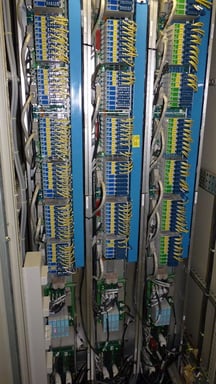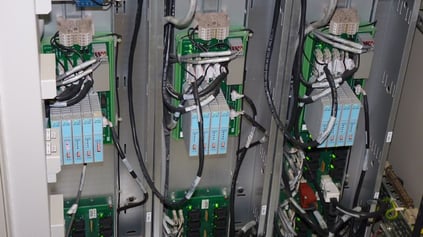This guest blog post was authored by Chuck Micallef, president of CJM Consulting and marketing lead for FDT North America, in conjunction with an ISA co-hosted webinar detailing the experiences of Dow Chemical Company and how it has successfully implemented an effective asset management and reliability program. This post has been updated with the webinar recording.
Assets come in many forms including physical assets, people assets, legal assets, knowledge assets, property assets and others. Wikipedia defines asset as an economic resource – anything tangible or intangible that is capable of being owned or controlled to produce value. Simply stated, assets represent value of ownership that can be converted into cash. Using this definition, the significant number of installed measurement and control devices currently used to monitor and control our manufacturing facilities are assets because they are owned and controlled to produce value. For years, these intelligent assets were configured, installed and basically forgotten. That is, until it failed or caused a failure which might have caused a significant loss of value.
Using field proven intelligent measurement devices and their embedded field communication protocol are examples of assets that should be included in asset management systems and programs along with valves, pumps, motors, mixers and a host of other critical assets. These process and factory automation protocols include EtherNet/IP, FOUNDATION Fieldbus, HART, IOLink, ISA100, Profibus, ProfiNet, and many others. Intelligent measurement devices communicate their measurement values and device diagnostics using these field communication protocols to connect to control or asset management systems to produce a product or to provide information that contributes to the success and reliability of the operation. Image 1 shows a typical IO panel that includes the 4-20mA measurement signals to a control system and a multiplex that is used to access the intelligent measurement device information.
Over the past 10+ years, tens of millions of intelligent measurement devices and control valve positioners (assets) have been installed but their real asset value remains untapped. In a recent trade publication article, Herman Storey, chief technology officer of Herman Storey Consulting, LLC and an a strong advocate of asset management programs, stated that automated diagnostic capabilities for valves and other field devices available through field communication protocols can provide huge benefits at many levels. Effective diagnostic tools can make these activities quick and easy to perform from a central control facility or even a remote location. The concept of taking the data to an expert instead of taking the expert to the problem is a powerful and underutilized concept, but depends on proper implementation of a good set of diagnostic tools and effective work processes.
Asset Management
According to many users familiar with this topic, the low capital investment costs to add an asset management system vs. the ROI (return on investment) may be a single avoided event such as an unplanned shutdown of the operation. If this is the case, then why are not more operations today aggressively using an asset management system to maximize their assets and improve plant reliability?
Let’s review the lack of asset management systems situation in more detail. The asset management system includes several product categories or components. First, you need intelligent measurement and control devices. Second, there needs to be a communication protocol that provides and delivers the information to the control or asset management system. Third, is the physical connection and integration of the information that allows access to the information and lastly, you will need an asset management system − typically a PC based application which is available from many automation suppliers. Reviewing our list, it seems that the biggest cost is already covered – the thousands of intelligent measurement devices and the connection to a system.
If the system is not enabled to access the information, there are many suppliers who provide low cost solutions that give access to the intelligent device information needed for asset management systems. Image 2 is an example of a HART enabled multiplexer used to access and communicate the HART data to an asset management system while the 4-20mA signal continues to contact to the non-HART system. Although it might take some work to get these solutions installed and connected, the investment is relatively small compared to the potential increase in plant reliability they will enable.
As Herman states, “the second part of the lack of asset management problem is management. Technical problems have solutions given management support, but managers have to be rewarded for doing so. That kind of program requires good metrics, good reporting, and effective audits to produce a scorecard. In the absence of a good management system, poor performance is often treated as a technology problem, or just the normal state of things.” Management has to be part of the asset management team in order for the operation to get the real value from their installed assets. This requires an honest and “lead by example” commitment to get educated on the available information from the system and to learn what it takes to interpret and act on the information. Like many things, this is a process and does not happen overnight.
For success of asset management in general and IDM (Intelligent Device Management) in particular, a number of technical disciplines and business groups must have a cooperative relationship and work together to achieve common goals. These groups include procurement, project, operations, and maintenance organizations and many of the technical focus areas supporting these business units. If performance measurements and rewards for these businesses are completely independent, asset management will suffer. If KPIs and incentives are done well and technical focus is supported, work processes and tools for asset management can flourish and provide significant risk management and profit for the business units. Management has to provide the environment and reward system where asset management can be successful.
Putting intelligent devices to work effectively is what ISA108 is about. The purpose of ISA108 is to define standard templates of best practices and work processes for implementation and use of diagnostic and other information provided by intelligent field devices in the process industries.
Of course using the right standardized tools that are protocol, device and supplier independent can be one of the many keys to creating an effective and successful asset management program. A large refinery in Hungary uses such tools to improve plant performance. By using these tools, they support the field instrumentation maintenance activity providing the information used to identify the location of an asset problem, for device repair, and by remotely accessing device information, change the device configuration. Using the wealth of available information, their goal was to improve maintenance processes, and human competencies and skills.
In several case studies reviewed for this paper, a “champion” of the asset management cause steps up and initiates the training, investigation or program creation either as a result of their job position or just based on their desire and vision to improve plant reliability.
But, sooner or later management must decide to either remain part of the problem (status quo) or become part of the solution. There is little chance for success of a well designed and implemented asset management initiative without the full support and active participation of management from all levels of the plant organization. The culture and work process changes required to achieve significant change and significant gains are available by creating and using effective asset management but only if management is not an obstacle.
About the Author Chuck Micallef is president of CJM Consulting, Inc. and serves as the FDT marketing lead for FDT North America. He has more than 35 years experience in the process automation industry with a focus on field communications technologies and intelligent measurement and control devices. He is a graduate of Wayne State University in Detroit, Mich.
Chuck Micallef is president of CJM Consulting, Inc. and serves as the FDT marketing lead for FDT North America. He has more than 35 years experience in the process automation industry with a focus on field communications technologies and intelligent measurement and control devices. He is a graduate of Wayne State University in Detroit, Mich.






